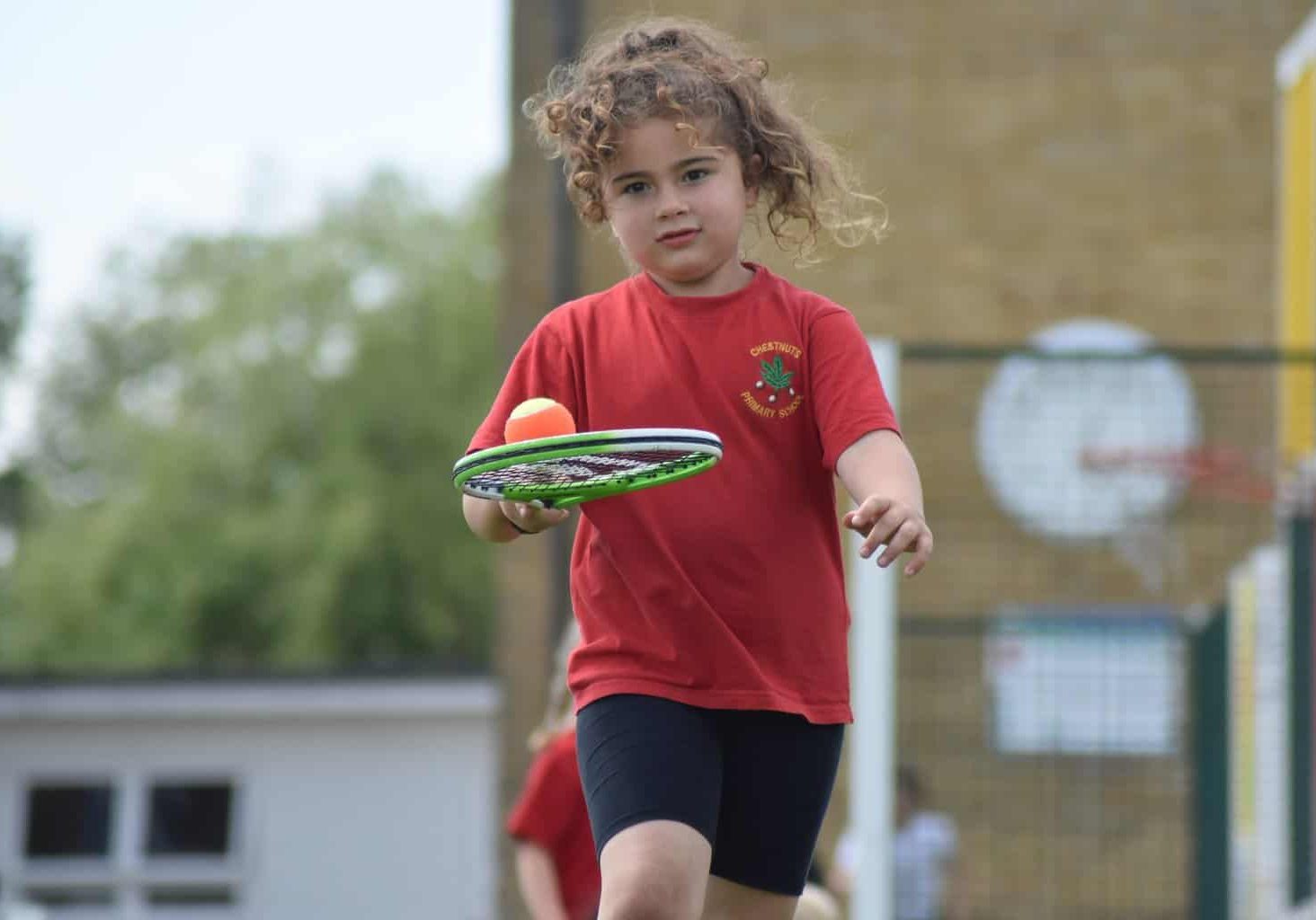
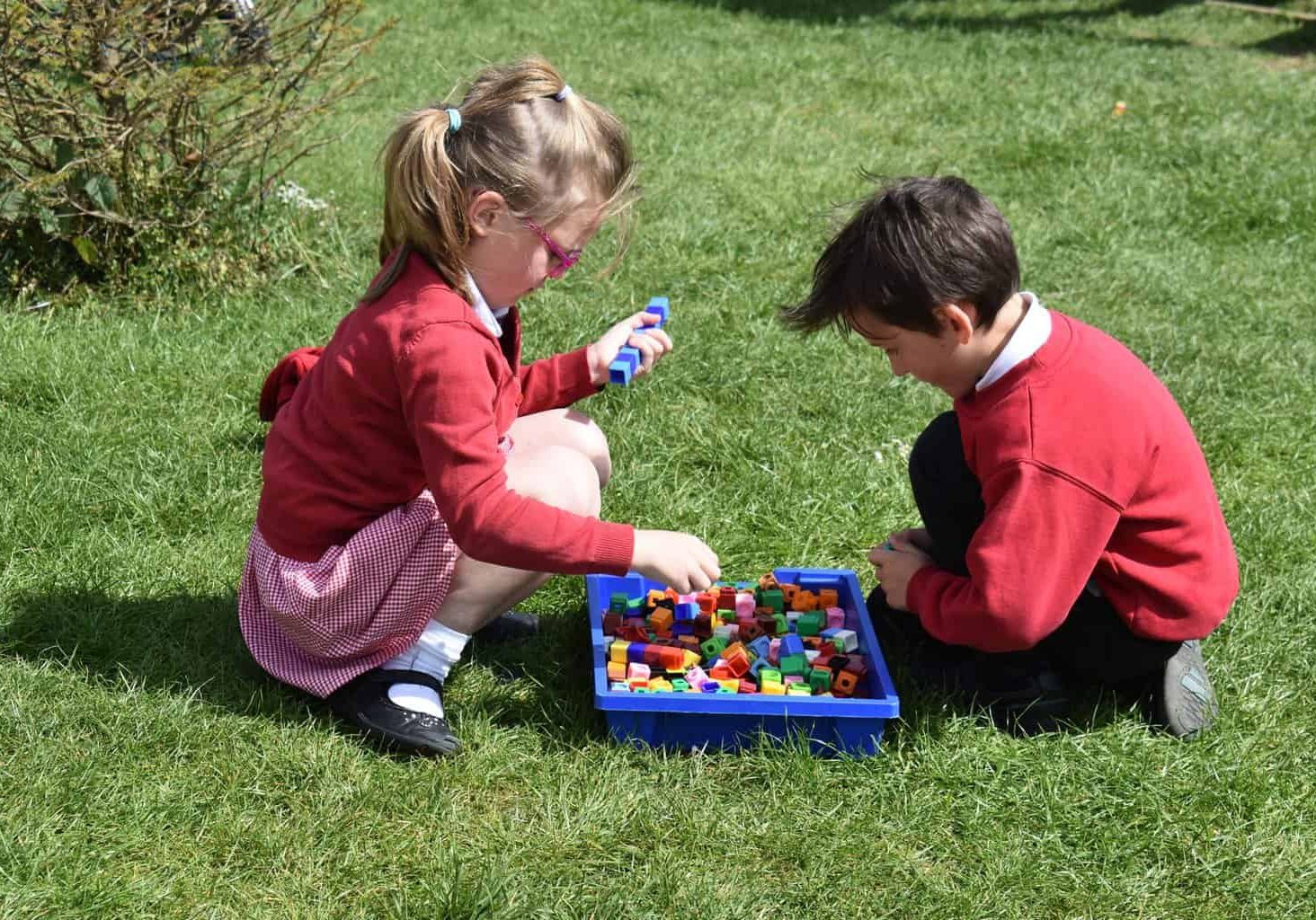
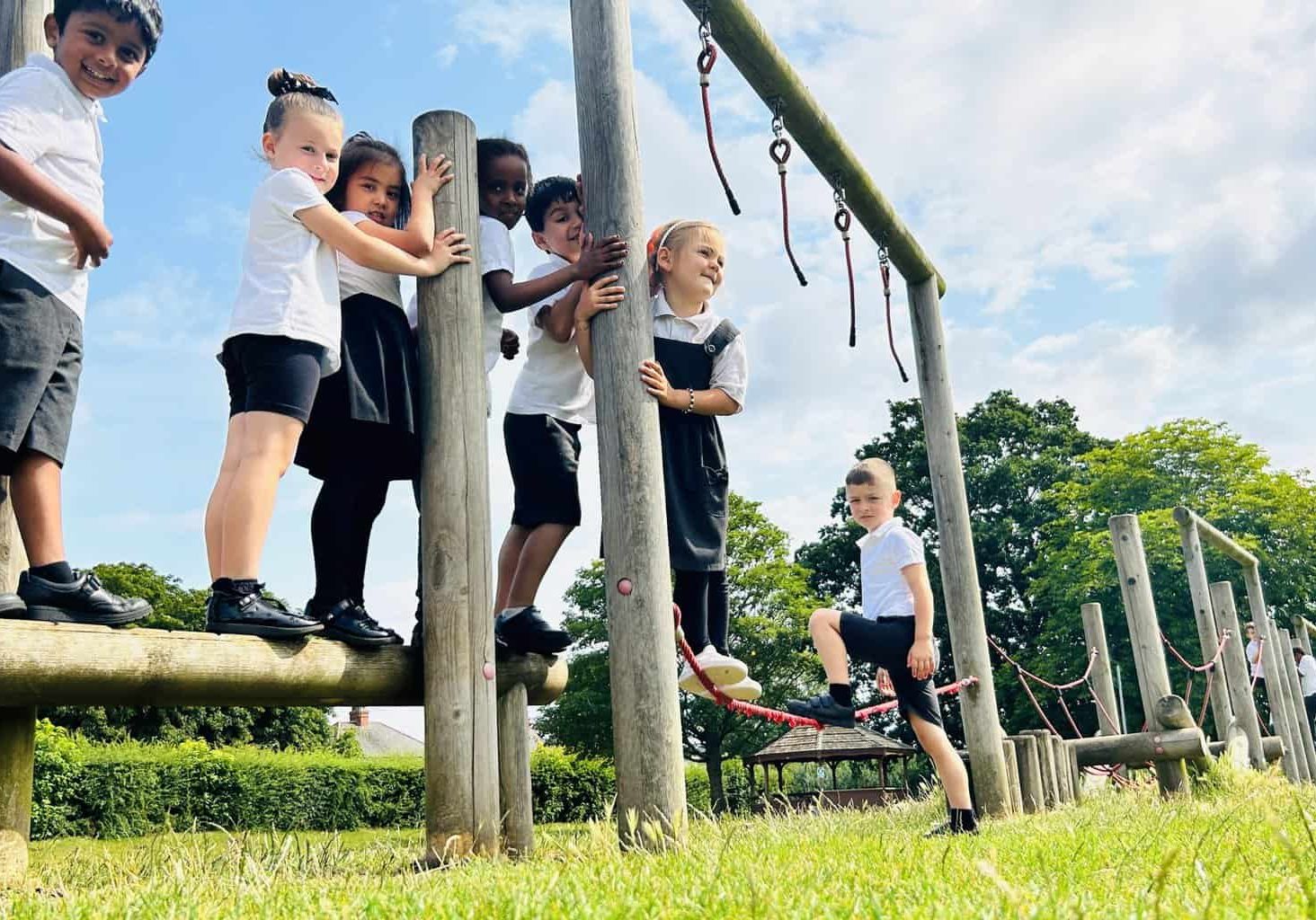
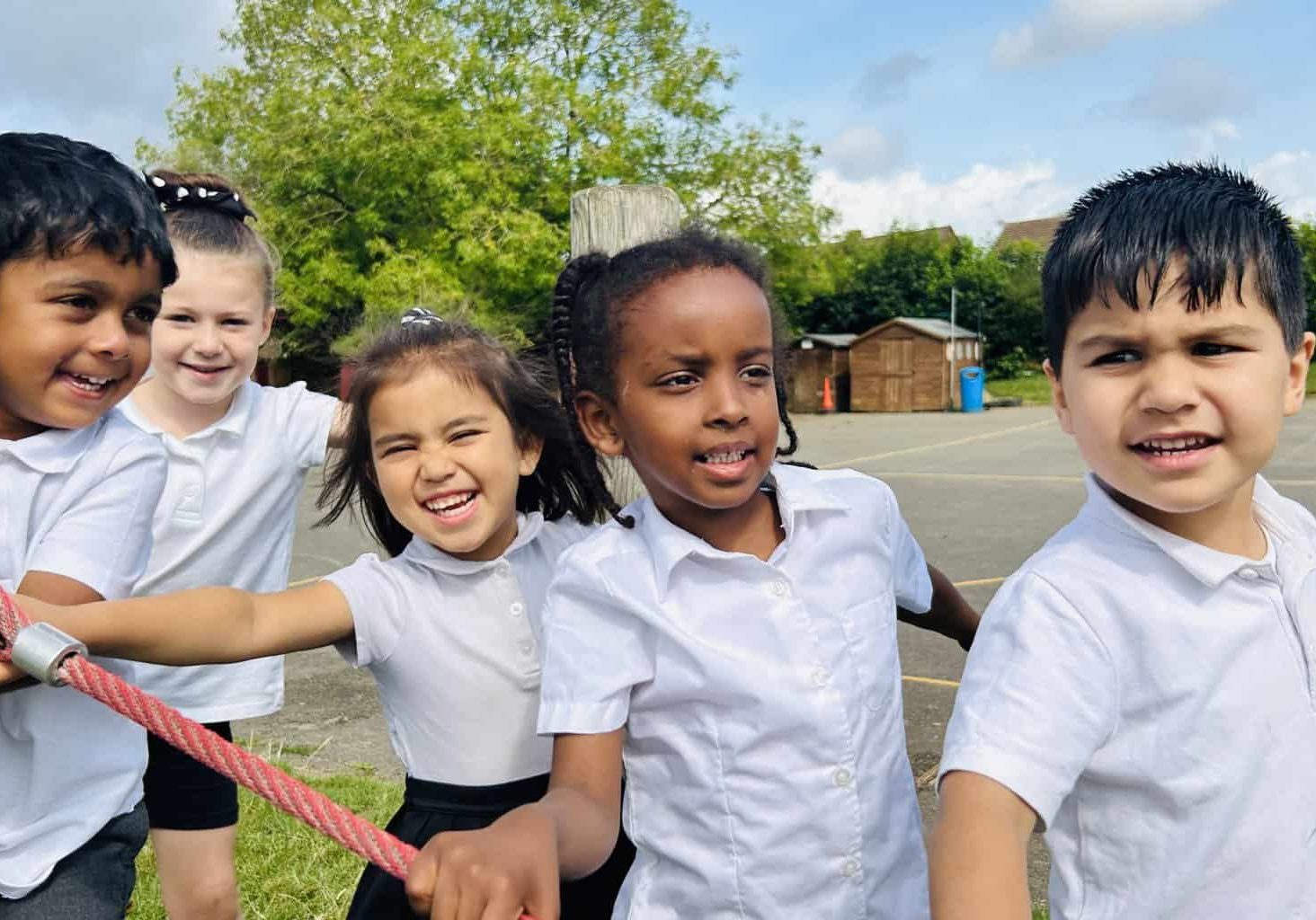
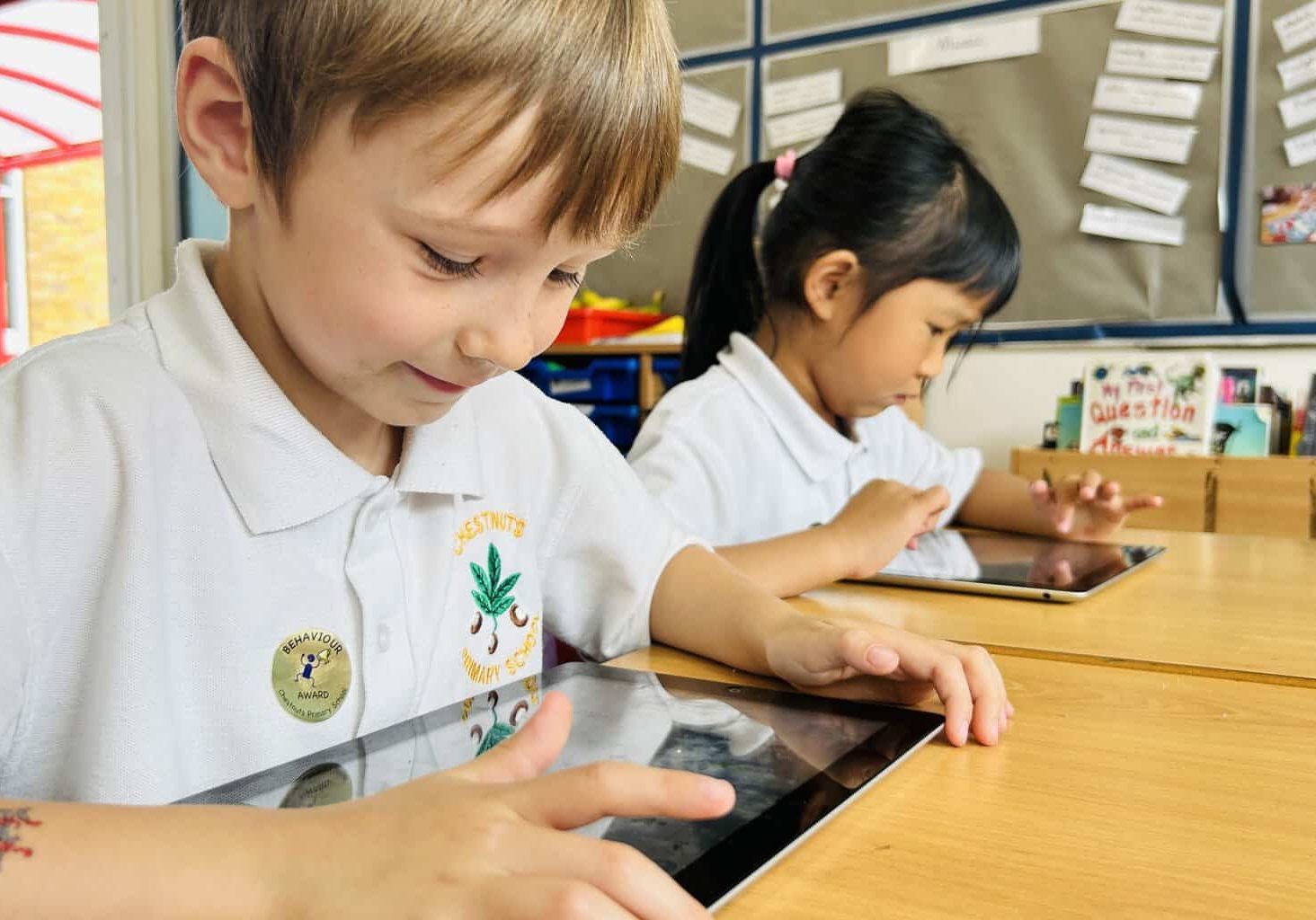
Phonics
The Read Write Inc. Phonics Programme
Reading is the key that unlocks the whole curriculum, meaning the ability to efficiently decode is essential. At Chestnuts, we use Read Write Inc. as our inclusive, synthetic phonics programme to teach the children in Early Years, Year 1, Year 2 and beyond to read, write and spell. RWI is a clear, progressive scheme which enables the children to build upon what they already know by providing opportunities to revisit and review previous learning. The children learn the 44 common sounds in the English language and are taught strategies to recognise, decode and segment vocabulary. The use of pictures and handwriting phrases engage the children and support them to be able to recall and apply the phonemes they have learnt for reading and writing. As a team, we understand the science behind learning and recognise that retrieval practice is key in moving learning to the long-term memory. The RWI scheme is built on these principles as children are regularly expected to recall the sounds they have previously learnt and apply these to their new learning. It is also important to us that children recognise the links between their current learning and other areas of the curriculum. As a result, we use RWI phonics and strategies to support reading and spelling throughout all curriculum areas, regardless of the age of the children.
RWI has high expectations of all learners and allows children to develop from their individual starting points to become confident readers, empowering them to read beyond the classroom setting. In addition, RWI supports pupils to work effectively with a partner to explain and consolidate their learning which we know further supports children to make good progress and become effective communicators. Through a range of assessment techniques, we are able to monitor the children’s progress, identify their individual areas of need and support them to develop these.
The children’s phonics journey begins the moment they start school in Reception where they will have daily phonics lessons exploring individual sounds and learning to read these within words with their bouncy puppet friend ‘Fred the Frog’. Fred is a small frog who participates in lessons, modelling how to pronounce and blend sounds together as well as making them fun!
The following video is an example of Fred Talk and blending with Fred.
https://www.youtube.com/watch?v=dEzfpod5w_Q&t=19s
We begin by teaching the Set 1 sounds; the children then progress to reading stories and texts that contain words made from sounds they know. Each sound is accompanied by a short handwriting rhyme that supports the children in forming and writing their letters. Once this knowledge is secure, the children progress to learn Set 2 and 3 sounds and encounter increasingly more complex stories and non-fiction texts. They also focus on comprehension skills and reading for enjoyment. Within all Read Write Inc. lessons, the children are exposed to both green and red words which they learn, helping them to become more confident, independent readers.
Red words are words that are not easily decodable and do not conform to the spelling rules. Read Write Inc. supports children in learning to both read and spell these words. Green words are words linked to the sounds that are being taught and those previously covered.
The cards will have dots and dashes on them which we call ‘sound buttons.’ Each dot or dash represents a phoneme (unit of sound) within the word:
Dot – a single letter which represents a unit of sound.
Dash – where two or more letters combined form a unit of sound.
Nonsense Words:
As well as learning to read and blend real words, the children have opportunities to apply their sound recognition skills by reading ‘nonsense’ or fictional words. These will feature in the Year 1 National Phonics Screening Check in the summer term.
Spelling:
During a Read Write Inc. session, the children are supported to develop their spelling skills. This begins in Reception when the children are forming letters and starting to write and continues throughout their Read Write Inc. journey. The children have the support of Fred who models the process of how to spell by segmenting words and then being able to blend them back together.
Assessment:
During the year, we regularly assess all pupils’ phonic knowledge to ensure that they are working at a level which is both appropriate and challenging for them. Our system of assessment reflects the needs of our children and can be used flexibly should children demonstrate accelerated progress. For any children who are finding it difficult to grasp phonics, we use one-to-one tutoring sessions with a highly trained staff to focus on those areas of need and ensure that the children continue to progress in their learning. We ensure that this information is shared with parents so that you are able to support the children at home with their reading and phonic development.
Expectations:
The Read Write Inc. scheme progresses through nine different levels and the expectation is that all children will leave Year 1 speedy readers, ready to take on the next part of their reading journey.
| Books | Year Group Expectations |
| Pre-Ditty Sheets | Reception |
| Red Ditty 1-10 | Reception |
| Green 1-10 | Reception |
| Purple 1-10 | Reception/Year One |
| Pink 1-10 | Year One |
| Orange 1-12 | Year One |
| Yellow 1-10 | Year One |
| Blue 1-10 | Year One |
| Grey 1-13 | Year One and Year Two |
Read Write Inc. Book Bag Books:
Each week, children will bring home a RWI Book Bag book which is closely linked to their increasing phonological awareness and reflects the learning in school so that this can be further consolidated at home. In Reception, these may initially be small slimline blending books before your child progresses onto story books. As we believe that it is important for children to experience success and gain confidence that they are readers, we encourage them to re-read books or read similar books to those they have seen before. In doing this, they develop their reading confidence, fluency and accuracy as well as a love for reading. Reading at home is important in embedding the learning the children have started in school, but it is also an opportunity for them to spend quality time sharing their learning journey with you.
Phonics Screening Check
The national Phonics Screening Check was introduced in 2012 for all Year 1 pupils. It is a short, statutory assessment designed to ensure that children are making sufficient progress with their phonological awareness and strategies on their path to becoming independent readers. The check is carried out in the month of June each year and we will inform you when this is due to take place and how your child can be supported further at home. For those children who have not yet secured the necessary skills in Year 1, there will be another opportunity for them to sit the Screening Check in Year 2 and additional support for them will be put in place.
How can I help at home?
- Help your child to sound out the letters in words and then to ‘push’ the sounds together to make a whole word. Try not to refer to the letters by their names. Help your child to focus on the sounds. You can hear how to say the sounds correctly at this link: https://www.youtube.com/watch?v=s6OiU2h3sUI&t=5s
- If your child brings home a book they seem familiar with, encourage them to tell you the story out loud; ask them questions about things that happen or what they think about some of the characters in the story.
- We know parents and carers are very busy people; however, if you can find time to read to your child, it helps them to learn about books and stories. They also learn new words, what they mean and the rhythm of storytelling. Showing that you are interested in reading yourself and talking about books and stories as a family can support your child to develop a love of reading.
- Support your child to watch and engage with the RWI videos that will be sent home in Reception, Year 1 and Year 2. These videos are a fantastic resource which reflect a part of the lesson we deliver in school. They consist of several important activities which develop children’s phonic and reading skills and can be used on smartphones, tablets and other electronic devices. They can be accessed independently by the children or can be something which everyone gets involved with. Watching and accessing these on a regular basis will support your child’s development and progress.
